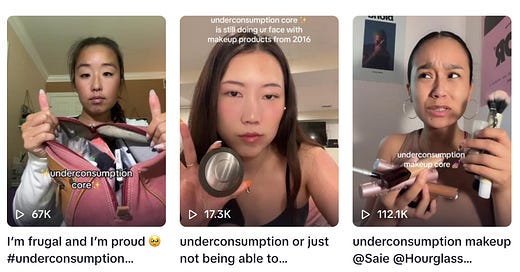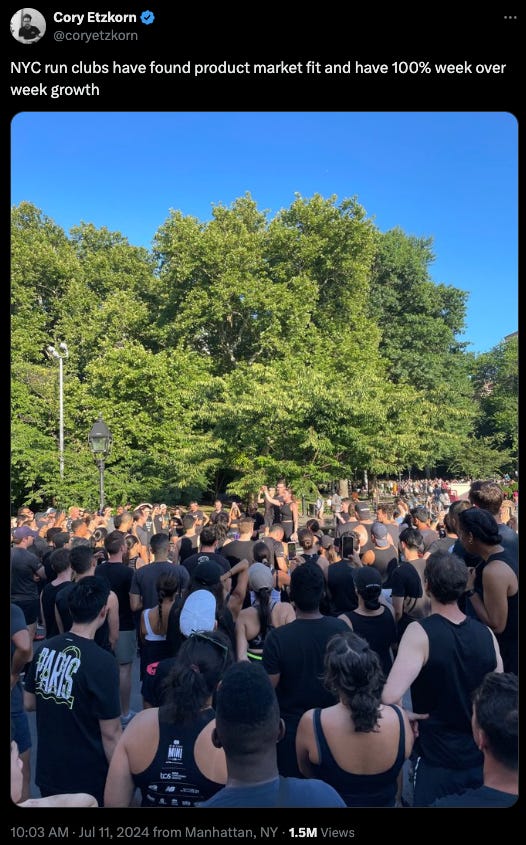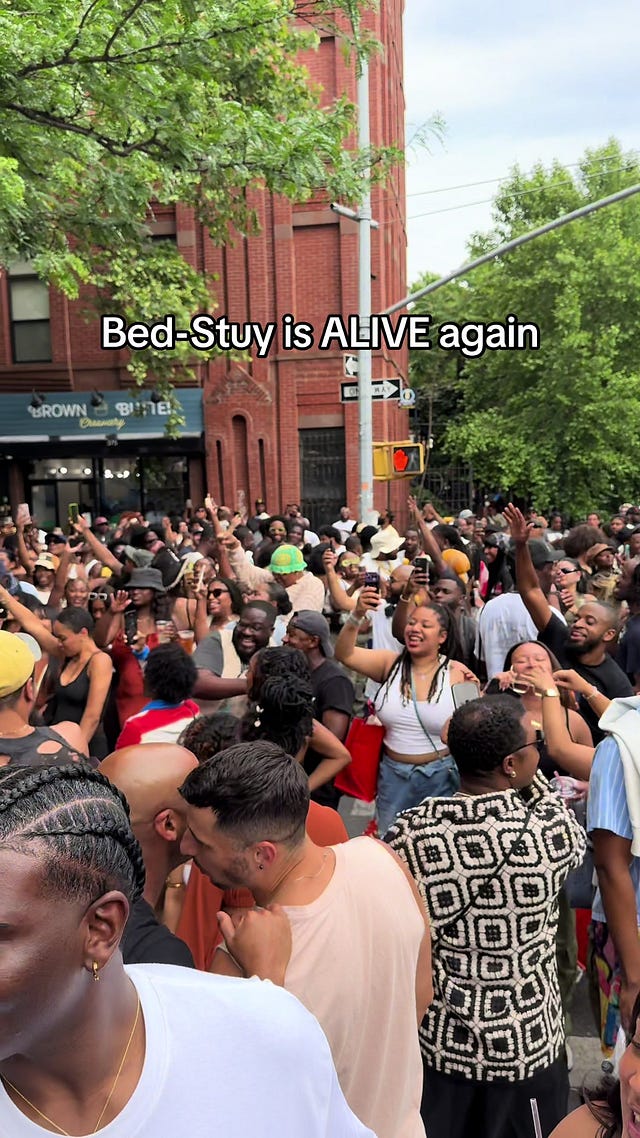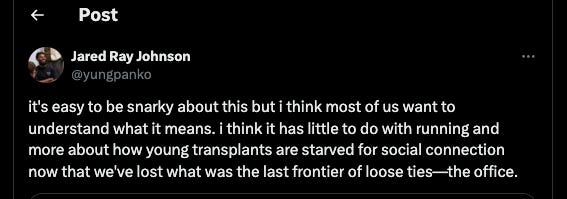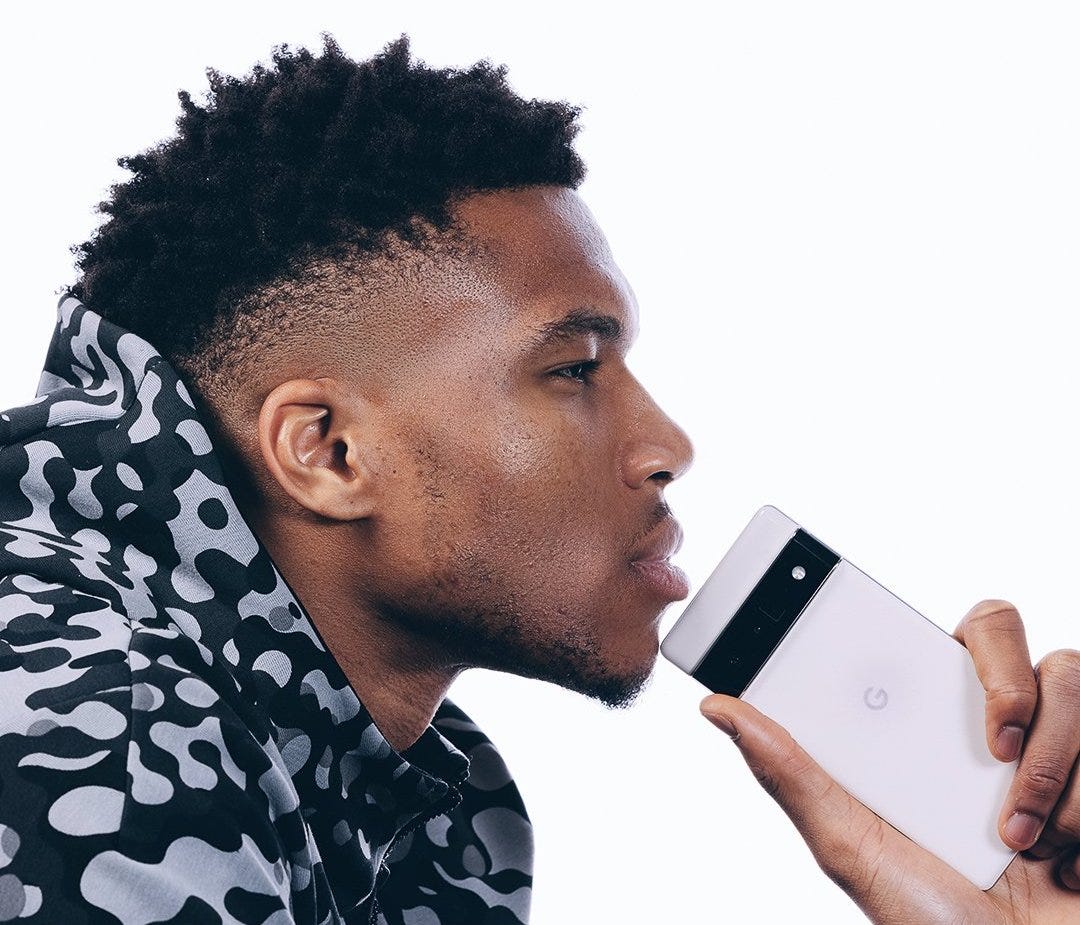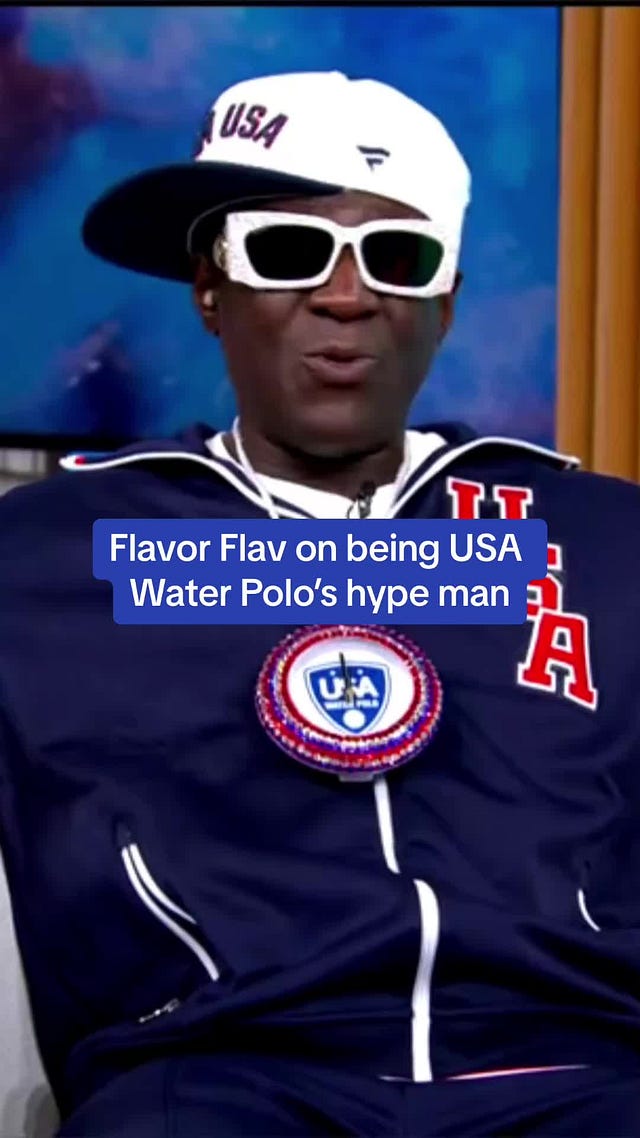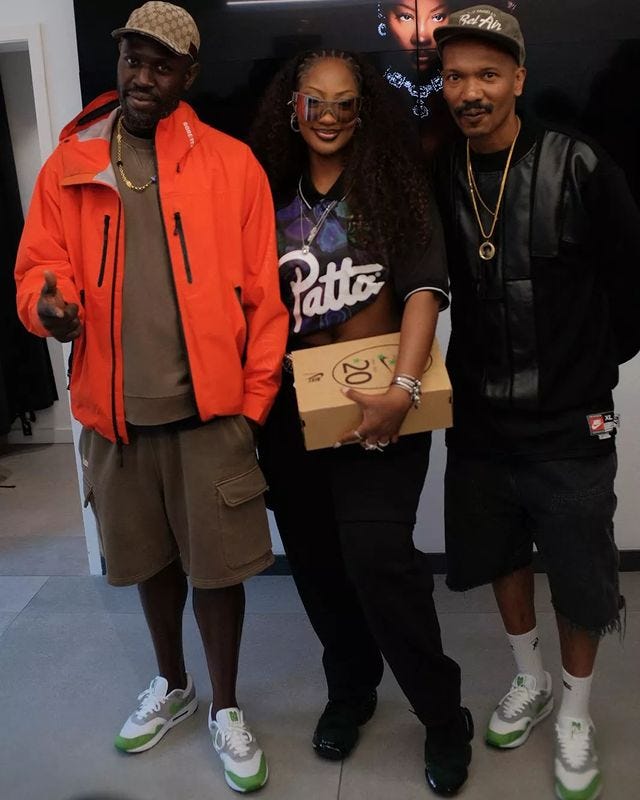Underconsumptioncore, the 'middle friends hang out' opportunity, boomer book lists, etc
Reporting live from the very-functional, not at all unhinged US of A
Hi hi,
I’m writing this from a wild heatwave in NYC. I don’t remember what it’s like to not be sweaty. Please enjoy the temperate climate if you have it where you are.
Underconsumptioncore, the tension of valuing sustainability vs. being a shopaholic, and brand purpose
I take every tiktok microtrend with a grain of salt, but I did think this very gen-z reframing of being broke / reducing spending (lets be honest - because the timing of this trend, amidst inflation and aggressive shifts in the labor market, is not a coincidence) as ‘underconsumptioncore’, or ‘normal consumption’ was very interesting - particularly on tiktok, which typically promotes a new kind of hyper-accelerated consumption. People are becoming much more self-aware.
 Tiktok failed to load.
Tiktok failed to load.Enable 3rd party cookies or use another browser
Alongside this trend floating up and down the algo came this essay from
titled “The Weird Irony Of Being A Shopping Addict Who Cares About Sustainability”.also wrote in about how Brands are planning into an anticipated “Great Exhaustion” in 2026 (reader, i believe we are already there):“I abandoned fast fashion long ago and most of the clothing I acquire is secondhand, yet it feels excruciating to accept that my insatiable appetite is actually part of the problem. [..] In spite of the plentiful nature of my closet, I still crave more. Over time as I have negotiated my own impulses, I have begun to wonder, is it possible to rid oneself entirely of the desire to consume?”
“…Consumers will continue trying to divorce from consumerism. With nihilism being a default mindset for many of us, we’ve turned to shopping to alleviate boredom and to make us feel better about the world. Plus, TikTok, Instagram, and basically every digital space tells us to buy stuff all the time. [..] By 2026, de-influencing and no-shopping challenges will morph into an even bigger movement to slow our consumption and shop mindfully instead of for a quick fix.”
Who knows if this will actually materialize. As
noted in her essay, “the “say-do gap” — when people purport to believe one thing yet behave differently — is well documented. According to a 2017 GlobeScan survey, 65% respondents want to put sustainability first while shopping, yet only 26% actually do so.”Maybe the C-suite have seen the say-do gap and decided this type of thing no longer matters. If you listen to LinkedIn gurus then you will be convinced that brands are retreating from things like Purpose, while fashion brands in particular are abandoning commitments to climate causes (e.g Nike laying off 20% of its team focused on Sustainability) as Shein hits record numbers. I’m not convinced that just because people behave one way when they have budget constraints, that they don’t want to see companies make a commitment in the other direction. Sometimes the idealized version of the self is more important than the actual reality, and perceived values matter.
I’m reminded of something written by one of my favorite companies, Keap. Keap is a candle-making B Corp, located in upstate new york. I got to know them through their subscription service - they send you a new candle every month, based on the produce or seasonal shifts (e.g cozy ‘the library’ scents for Winter). It was founded by two ex-Googlers and they really do things differently - they’ve never been on social media, they routinely go ‘offline’ for holidays etc, and often write very thoughtful long-form about why they’ve made certain business decisions.
They wrote about ‘An Alternative To Building A Great Brand’ a few months ago, sharing the thought that “the company is where everything happens—and the brand is its outward appearance."
It’s meaningful to have a nice looking façade, but I see building a façade without a functioning home behind it as an empty endeavor. And yet with the globalization of supply chains over the past few decades, most of the companies we buy from are in fact mere façades . One could argue that the problematic success of e-commerce giants like Temu is removing the veneer, and showing us the raw reality of what we’ve been getting served (with the addition of even more blatantly manipulative and addictive inducement features ).
Nowadays, many teenagers aspire to be a brand themselves or feel socially pressured to do so. It’s a tragic state of affairs that we would be motivated to work on curating an external perception of ourselves rather than growing our whole selves—and it is fully a reflection of our current social media era.
I do believe we are nearing the end of that era —especially for young people . As we enter the next stage, I am hopeful we’ll see a new generation of entrepreneurs emerge, aspiring to build great companies: whole companies that serve a purpose, and align their internal culture with their external marketing.
People don’t know how to socialize or find community. Thats the reason _______ is popping off.
What do run clubs, nyc transplants and Nigel Sylvester have in common?
Nigel Sylvester combined a go biking day with a recent Nike launch and the streets were packed out.
A couple of people I know are circling around a theory that some of these events - run clubs included - are less about the activity itself (no disrespect to Nigel Sylvester) and more and more about the fact that people no longer get seamless opportunities to socialize for free.
This is almost an addendum to last week’s packet about Friendship. We need more spaces to build some of those ‘middle friends’ or what Jared calls loose ties.
I chatted to my friend Cherie Camacho about this recently too (in the context of block parties in BK) - her theory was that things will normalize in a year or two, but thats really what is pushing these massive congregations. Honestly, if i’m an experiential agency I am on the proactive pitch hunt like CRAZY right now. People want nothing more than to have a low-stakes reason to get together and it doesn’t need to be a big overengineered ‘thing’.
The gerontocracy extends to literature, too
Lots of responses to the NY Times ‘100 best books of the 21st century’ list but I most enjoyed this take from
:“The list is heavily weighted toward writers over 65. There is not a single author under 40. Unless I missed someone, there are only two millennials on the entire list: Fernanda Melchor and Torrey Peters. If you move the cutoff to 1980 births, Justin Torres would also count. Still, only 2-3 titles out of 100 for the generation most of this century? There are no zoomers and even Gen X is underrepresented. This is a list of boomer authors, largely.”
There’s much more knowledgable analysis of the list in the full post, but put within context of other cultural areas in USA, it’s so interesting to see “the standard” continue to be held within the preferences of the Boomer age range.
Is it that they don’t want big brand deals, or they don’t need them?
Much is being made of this BOF piece titled “Athletes don’t want Nike or Adidas anymore. They want independence.” Great engagement-bait headline, if not a little reductive. i’m not sure if it’s entirely true - at least maybe not for the mega-stars, as evidenced by Caitlin Clarks recent deal, although we saw Angel Reese take a different route, certainly more about offering her creative input & alignment with leadership (Shaq being the President). What I think is a interesting factor, values aside, is the shifting economics of being a pro athlete in general - specifically within North America, where the removal of NCAA limits on NIL deals, along with rapidly inflating salary levels in sports like NBA, driven by enormous tv licensing deals, is changing the math. Ultimately, athletes can now source their money from quite a few places.
Where this does present a fork in the road is the leverage that Athletes will have in commanding these deals. Restrictions on exclusivity, contract periods, etc from Nike and Adidas are about to get much looser (imo) - or, they should.
A lot of Athletes are many years deep into their investment arc (this isn’t a new thing), but still understand the signaling power of major brand deals. Giannis is a more recent example of someone quietly building out a full portfolio of business built off his own likeness and his family, while still retaining a major partnership with Nike.
Interesting news + random link round-up
Flavor Flav is the newest hype man for the USA womens water polo team, and recently jumped in the pool with them
Tiktok failed to load.
Enable 3rd party cookies or use another browserSpanish fast-fashion brand (what is it in the water over there? Zara aint enough??) Mango have reported their highest-ever revenue at 1.5bn this year. “Sales of Mango's menswear division saw the highest growth per category, with a 21% increase year-on-year.”
The Row have released an Elordi jean. As they should. Talking to men late last year for a research project, MANY namechecked Jacob Elordi to me as someone with great style.
Trixie Mattel is taking a drag sabbatical. Whether or not you’re into drag, there’s some important gems in here about taking care of yourself and curtailing burn-out. “It is not so fierce to work yourself to death. To do so much Drag as Trixie, that at a certain point, I felt like a Trixie impersonator. […] To be so lucky to do what I do, and not be appreciating it… Disrespectful.”
The Robinhood gold card comes with a louis vuitton wallet. (this feels so off-brand for a company literally called Robinhood…)
Here’s a humanoid AI robot head via China just for fun.
Style + FEETS highlights:
Love this accidental Samba ad from Egypt, 1981
Latest 18east drop is beautiful
looks like nike x patta are bringing back the iconic chlorophylls:
You’ve probably seen the story about the Sashiko gals, but i haven’t seen enough love for these Rifts so here you go.
Thats all for now! Have a great week friends.
GG x

